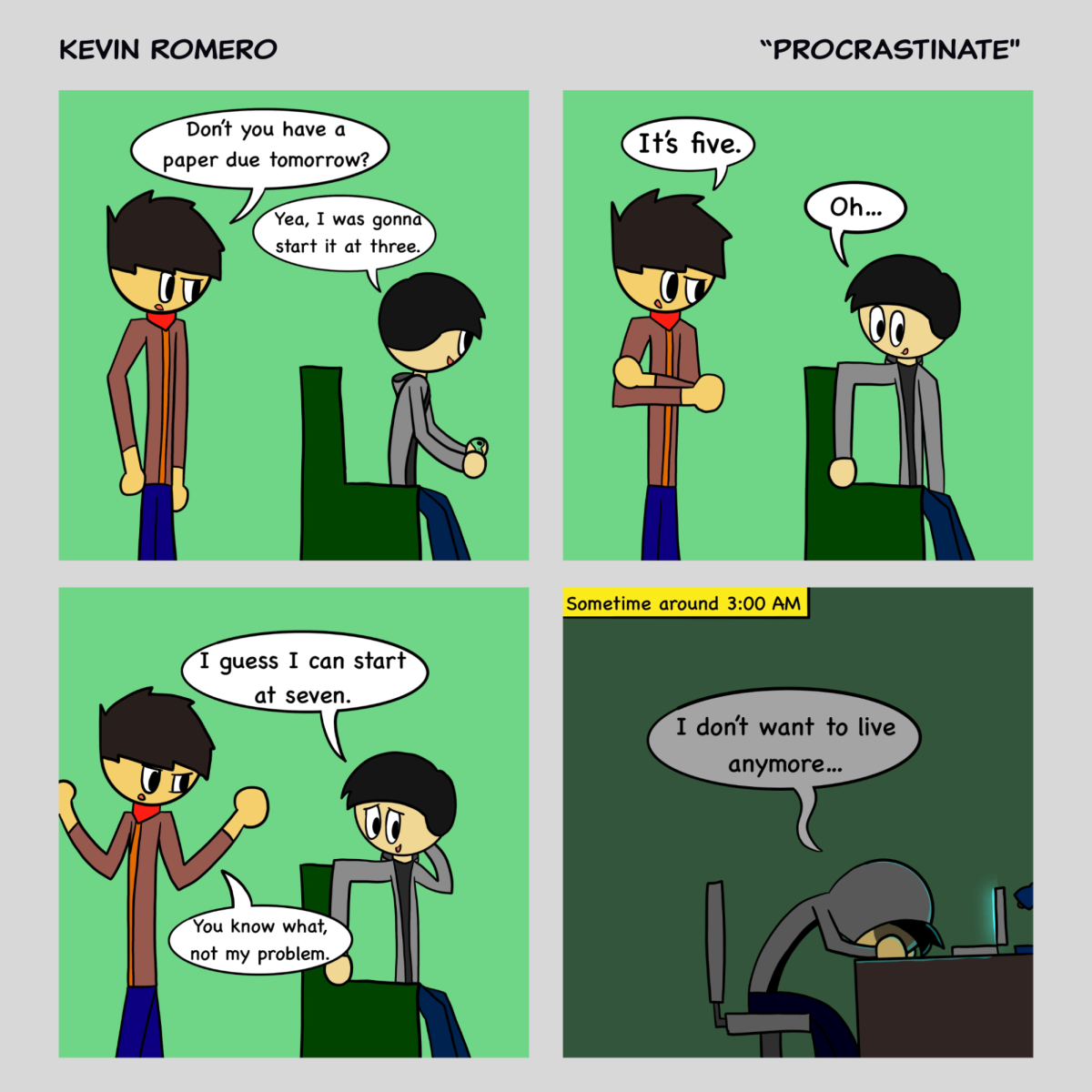
The Marías’ Submarine
Indie band The Marías pulled out all the emotional stops with Submarine, a subversive, dreamy, experience with aquatic aesthetics and Latin influences. Starting on a Ride that introduces the album, each song follows an Echo through fiction versus reality and depressive dreams following breakups and loneliness.
Each song explores new, uncharted depths, ebbing and flowing with oceanic finesse. Run Your Mouth is a dance-pop avoidant anthem that explores emotional distance in a relationship but is never able to find a resolution. You can wait for the other person to “turn around and talk it through but we won’t.” Real Life switches the mood to sonically sensual and explores wanting a fantasy-like romance but having to sadly accept the reality of white lies and goodbyes.
The band goes in a floaty pop direction with Paranoia, a reflection of intrusive mistrust in a relationship. Lead singer Maria Zardoya croons about her paranoid partner and sincerely asks them, “Why do you think I have another when you have always been the one?” She tries to be there for them but ultimately feels hurt since she “can’t get through to you.” In a dreamy, Latin haze, Ay No Puedo tries to reel back a far-gone partner, beckoning them back from their avoidant voyage. Translating to Oh, I Can’t in English, this song is a beautifully depressing highlight and conjures sunny imagery through its Caribbean-pop rhythm.
Alternating to a dissonant, somber tone, Lejos de Ti – or Far from You in English – is an SOS to a distant lover. Crooning through watery, washed-out guitars, Zardoya fondly remembers her lover through lonelier moments and attempts to call out to them to no avail.
It’s also no wonder that No One Noticed became such a hefty hit for this album; it perfectly captures post-breakup neediness and feeling so detached that “no one tried to read my eyes, no one but you.”
As the album ends with the deep-sea sadness of Sienna, the band concludes with a love not meant to be but the desire to try to move on. Submarine is wonderfully oceanic with lyrical depth that cannot be replicated. This album, voyaging through the trenches of heartbreak, is truly a standout for the indie-pop world.
Clairo’s Charm

Enchanting and endearing, Clairo’s Charm bewitched many hearts and is one of the more impressive indie releases this year. The upbeat piano groove, Sexy to Someone, started this pristine project’s rollout and by the time mid-July came, everyone entered this charming orbit of Carole King-esque songwriting and lovely melodies.
Second Nature offers easygoing pleasantries, sprinkled with cute “da-da-dums.” Clairo slowly learns that her love for her partner is so easy that it is practically second nature. Yet, by Slow Dance, she finds that the love isn’t the same, tracing it to “when the candles burn out and the record is faded down.” Even through the heartbreaking epiphany, she reaches for gratitude even when things don’t work out in the end. Thank You embodies this as a letter to an ex-lover, thanking them for their time as she is willing to “put my pride on the line.”
An undeniable love jam, Juna exudes 70s-styled romance; intimacy has never sounded so elegant! As a sensual songstress, Clairo nails the lovesick imagery of going dancing and wanting to buy (and slip off) a new dress for her partner. Add Up Love swings back to post-breakup bittersweetness and the times she misses with her ex.
Glory to the Snow describes a love blooming through dormancy and still prevailing despite the odds. With warm reassurance, Clairo rekindles love and strings together romantic memories. Pier 4 ends this album with nostalgic coziness. Rhetorically asking “What’s the cost of it, of being loved?” she doesn’t quite conjure an answer and instead, ventures to keep finding herself while mixed in finding fulfilling love. As a concluding acoustic ballad, Clairo sweetly winds down such a charming complement to her last two endeavors.
Halsey’s The Great Impersonator

A mystical memoir on physical and mental illnesses and recovery, Halsey unveils a spectrum of herself in The Great Impersonator. In different, revelatory close-ups, this album spotlights Halsey as a star of her own tragic yet moving storytelling. A pop-punk thrasher like Ego examines her as a performer who rubs off the makeup and facade in the face of potential career crashouts and personal problems. It also harks on the insecurities of aging which she follows through in other tracks such as the angsty guitar-strung Dog Years or the unsavory nostalgia of Hurt Feelings. Like an old dog, she feels tired and on “a very short leash” but can’t help but keep going.
Ultimately, Halsey builds the most profound foundation of this record: her illnesses. Battling both lupus and a rare blood disorder, she brings so much of her pain and fear into the bulk of her lyricism. The End explicitly shows this struggle of surviving from going from doctor to doctor and finding love even when she questions “Would you leave when it gets hard?” A Stevie Nicks homage, Panic Attack similarly pursues the relationship between health and love and the precautions in diving into romance when “my body’s keepin’ score.”
In the eerie, intergalactic Darwinism, she furthers the narrative as an “only outlier, lonely archetype” when it comes to navigating her illness and feeling a cold isolation from everyone else.
As part of her Great Impersonator persona, Halsey also describes her place in the music scene. Lonely is the Muse mirrors the rocking darkness of Amy Lee, fulfilling the archetype of a misunderstood female rockstar who is constantly “reduced to just a body in someone else’s bed.” While not directly about her fame, Arsonist calls back to the likes of Fiona Apple and the misunderstood prowess of an angsty woman speaking out against abuse.
In winding down such a creative chasm of a project, Halsey grants listeners Lucky and the title track as insights into the life of a star. Whether she’s evoking Y2K chic or singer-songwriter whimsy, she redesigns herself and decides to “put myself together like some little Frankenstein,” signaling to listeners that her story certainly does not end here. She is reinventing herself and her stardom but will continue to impersonate the star power of Halsey, a great and innovative impersonator.
Kendrick Lamar’s GNX

Generational giant Kendrick Lamar has always moved musical mountains with groundbreaking releases and GNX is no exception. With a year of Drake disses and hard-hitters under his belt, GNX culminates his rap prowess and industry-related uncertainties.
Wacced out murals is the perfectly eccentric opener, with the first of several introductions on this album from mariachi singer, Deyra Barrera. This track introduces a collage of distrust and contempt towards Lamar’s contemporaries. Not only is he critical of rap superficiality but he affirms that “I never lost who I am for a rap image,” and truly cares for his craft.
This contempt translates into the techno-rap banger, squabble up. Lamar sharply asserts his artistic status and doesn’t let any of his foes – or even his friends – come for him. With its g-funk groove, it certainly has potential on a DJ’s club mix.
When Lamar isn’t being cleverly ruthless in his deliveries, he offers heartfelt and soulful symphonies and observations. luther is a mystical moment on this record where Lamar and longtime collaborator, SZA, gloriously craft an R&B love letter. Sampling legendary soul singer Luther Vandross and including a sweet array of strings, the duo croon about loving empowerment and reassurance to their lovers that “Better days comin’ for sure.”
Lamar switches back to scornful songwriting with man at the garden, a philosophical exploration of his sacrifices and hard work to get to his place in the music industry. Even when he is scrutinized by his foes and contemporaries, he hits with lyrical nerve on how “It’s innate to mind my business” and even “Pray for those who pray against me.” Rather than being a display of egoism, the track signifies self-affirmation and the strive for gratitude.
Still, in his humanistic fashion, Lamar shows his continuing distrust and disdain. hey now and tv off adapt the Not Like Us flow masterfully with a bling-era throwback and hardcore funk thrown in the mix. With his “therapeutic flow,” he grinds against adversity and declares “I’m way too important to let you slide on me.” With such monstrous momentum, Lamar triumphantly reunites with DJ Mustard on tv off with one of the sickest switch-ups and beat changes.
In-tuned with his lyricism, reincarnated deeply reflects Lamar’s passions and fame while also reflecting the lives of Black musicians such as John Lee Hooker and Billie Holliday. He sees himself in these tragic musicians, trying to escape vice and keep to his religion but struggling to keep on the right path. In heart pt. 6, he continues to trace the trajectory of his current self and inspire younger generations with “healthy conversation” and a “heart-to-heart.”
Gloria fulfills this thematically rich project, tying together love, fame, and vice. Joined again by SZA, Lamar concludes this 12-track venture on uplift and empowerment as a rap artist and, most importantly, as a person in society. He beholds his musical glory while recognizing the endless struggle that can come with it. With such conscious observations and insanely infectious production, Kendrick Lamar signifies everlasting promise in hip-hop and a paradigm of musical ingenuity.













